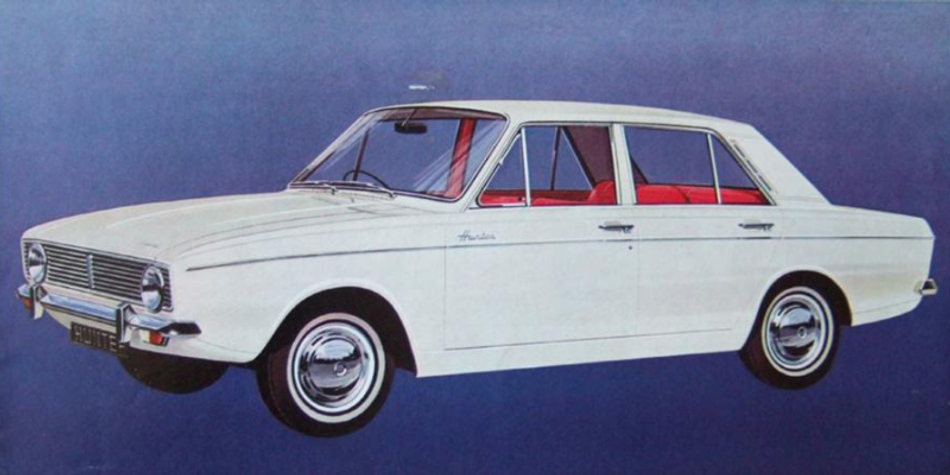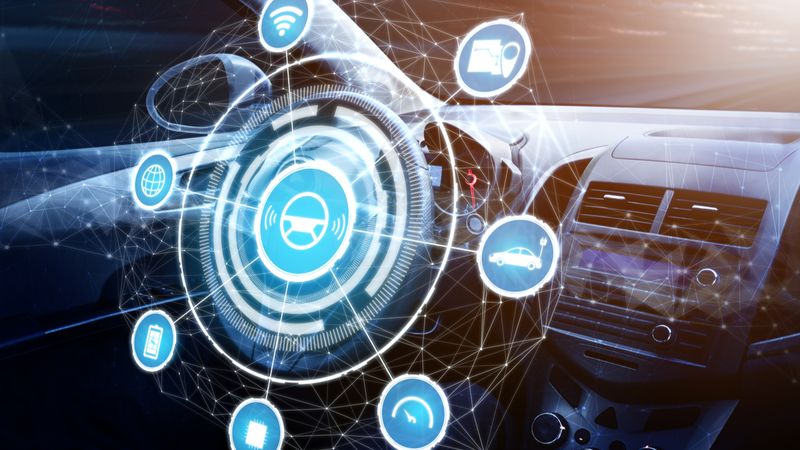Automotive In-Vehicle Networks - Ethernet or SERDES? Well....It Is Complicated
The first car my family had during my childhood was a 1967 Hillman Hunter built by the Hillman Motor Car Company in Coventry, England. In case you are a bit shocked about the year…...where I grew up, we got cars that had already been out for a while. I am old but not THAT old.
The first car my family had during my childhood was a 1967 Hillman Hunter built by the Hillman Motor Car Company in Coventry, England. In case you are a bit shocked about the year…...where I grew up, we got cars that had already been out for a while. I am old but not THAT old.

Recently I found that the Hillman’s wiring harness had only about 50 wires, totaling about 100 feet in length. Compare that to today’s cars that have more than 1500 wires that can total close to 1.5 miles in length and weigh more than a 100 pounds! And the harness may be getting heavier; in a recent conversation with an automotive OEM, they stated that the weight has jumped by about 30% in just one model evolution with the integration of Autonomous technologies.
So, there ought to be a strong focus on having just one In-Vehicle Network inside the auto, right?
Well…...the answer is complicated.
Bandwidth Requirements for the Future IVN
The requirements for the In-Vehicle Network (IVN) include high bandwidth, low latency, and high reliability to operate in the harsh operating environment of the automobile. Over the years, there has been multiple technologies such as Analog, CAN, FlexRay, LIN, LVDS, and MOST that have been used for the IVN. When we look at next-generation applications though, these legacy technologies cannot support the bandwidth requirements; moreover, some of them are proprietary and high in cost.
To get a better understanding of the bandwidth requirements, remember that the approximate bit rate of a video stream can be calculated as:
- Frame Size = Resolution x Color Depth
- Bit Rate = Frame Size x Frame rate
So, for an ADAS camera capturing a 1080p image with a color depth of 24-bits and transmitting at 30fps, the bit rate to be supported equals:
- Frame Size = 1920 x 1080 x 24 = 49,766,400
- Bit Rate = 49,766,400 x 30 = 1493Mbps
The Table below shows typical volumes of data from the different sensors involved in autonomous driving:
SENSOR | BIT RATE/SENSOR |
Camera | 500-3500Mbps |
Lidar | 20-100Mbps |
Radar | 0.1-15Mbps |
Ultrasound | 0.01Mbps |
Multiple Competing Standards for the IVN
- AUTOMOTIVE ETHERNET: Automotive Ethernet is considered a replacement for legacy IVN technologies, and most autos today are equipped with 100BASE-T (100Mbps). Different OEMs seemed to emphasize it for different areas – for example, Hyundai for Infotainment systems, while Volkswagen for ADAS connectivity. In 2019 and 2020, the Standard added both lower speed (10Mbps) and multigigabit speeds. The latest standard for data rates of 2.5, 5, and 10Gbps called 802.3ch was completed in early 2020. In addition, a new task force IEEE 802.3cy began its activities in 2020 to develop an automotive PHY for 25, 50, and 100Gbps.
- SERDES (ASA) : Another Standard for the IVN is based on SERDES. The Automotive SerDes Alliance founded in 2019 by BMW, Broadcom, Continental, Fraunhofer, Marvell, NXP for SERDES standardization now comprises 36 members and was created to expand the ecosystem beyond the then available proprietary SERDES solutions (TI:FPD-Link; Maxim:GMSL; Inova:Apix). The new Standard can provide bandwidths from 3.6 to 13Gbps for up to 15 meters.
- SERDES (MIPI A-PHY): In November 2020 the MIPI Alliance released their A-PHY v1.0 automotive SERDES PHY specification. The spec allows for asymmetric data in point-to-point or daisy-chain topology, with optional power delivery. Data rate equals 16Gbps with a roadmap to 48Gbps on the downlink and an uplink rate of 200Mbps; latency is low (6 us) and reach is 15 meters. The primary application is to connect sensors to the Image Signal Processor in the ECU, and the Graphics Signal Processor in the ECU to displays.
So, is the IVN going to be Ethernet, SERDES, or both?
Some automotive OEMs and Tier 1s feel that for a few initial years we may see both Standards, but after that automotive Ethernet with data rates up to 100G will subsume all others.
Kirsten Matheus, Engineer at BMW might have a slightly different point of view. She has suggested that SERDES is necessary and the right technology for ADAS sensor connections that carry asymmetric data point-to-point; whereas Ethernet is a networking technology good for other automotive applications. Considering that Kirsten played a key role in the standardization of automotive Ethernet, her views should hold some weight.
Automotive OEMs that are trying to finetune their IVN roadmaps, could adopt one of two strategies:
- A hedging strategy i.e. implement both Standards for the IVN - until ADAS requirements for Levels 3-5 driving become much clearer. The negative with this approach is that gateways may be necessary to translate data across the different domains/zones, and this will add cost as well as weight.
- A technical strategy i.e. design around the need for high-speed point-to-point links by putting increased processing and data compression at each sensor. The negative with this approach is that the cost of the sensor suite will go up, and the increased processing will require heat dissipation.
Testing of the IVN
As far as Testing of the IVN is concerned, it is important to test transmitter, receiver, and channel performance. What is interesting is that: With hundreds of tests to be performed, automated compliance test software with interpretation of specifications, repeatable results, setup wizards with user-friendly GUIs, and report generation seem to be just as important for automotive engineers as technical specs such as bandwidths, sampling speeds, and signal resolution.
Transmitter testing is done mostly with an oscilloscope to ensure signals being sent are not the cause of impurities; while receiver testing is done to check accurate detection of input signals - using signal stimulus or Arbitrary Waveform Generators. Impedance and return loss measurements are important in time and frequency domains to ensure reliable system performance and to diagnose signal integrity issues.

Final Thoughts
Recently due to minimal use due to COVID, my car would not start. I thought back to our family Hillman - my dad would just have to jiggle a couple of wires and it would always work. Well, after 10 minutes of jiggling I realized that was not going to work anymore. It is hard to know where to jiggle if you have close to 1.5 miles of wiring.
For better or for worse, in-vehicle networks have come a long way since the days of the Hillman Hunter.
$300,000 in test gear prizes up for grabs.
Accurate test gear accelerates innovation – so don’t miss Keysight University Live from the Lab. Join us for an exclusive sneak peek at the never-before-seen test gear, tips from industry vets, and a chance to win prizes like oscilloscopes, RF, and bench equipment. Gear up now…
